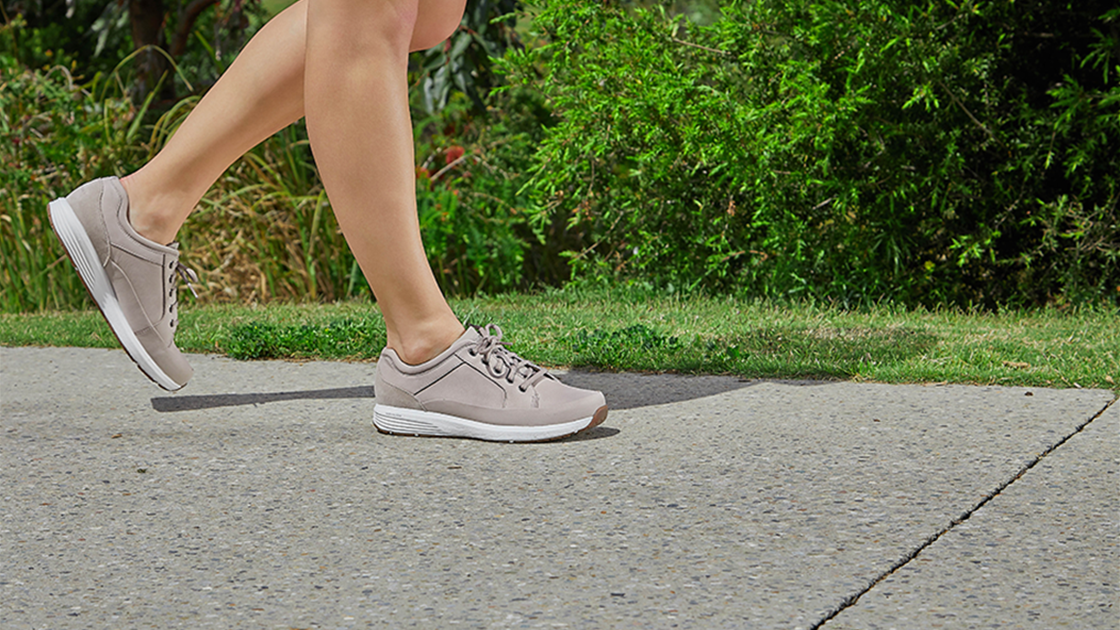If we don’t keep on top of them, bunions can lead to calluses, corns and gnarly looking toes that cause a great deal of pain, making walking difficult. The expert approved tips here will help you put your best foot forward.
For those of us who suffer from bunions (for the medical boffins that’s ‘halux valgus’) walking can turn into a rather painful exercise. The swollen bony bumps at the base of your big toe, bunions form when this toe is pushed in towards the others – basically like squeezing your feet into a pair of pointy-toed high heels – which forces pressure at an angle. Untreated, they can become more pronounced (and painful!), which can have a domino effect on your other toes, bending them out of place and causing them to rub against the inside of your shoes. This friction can lead to a build-up of hardened skin (corns and calluses) on your feet, as well as swelling, redness, sores and blisters.
Thankfully, these expert-approved steps can help you minimise the pain.
Tried and true
COMFORT FIRST
The first step to soothing sore feet is finding a shoe that really fits and don’t crush your toes. “Shoes that cut across the big toe joint, like a pointy-toed pair of heels or flats, constricts and irritates bunions,” says Caroline McCulloch, a podiatrist and physiotherapist, who has designed a range of supportive shoes available at Frankie4 footwear. “This can be shoes that are too flat, too narrow, have stitching across the bunion area, or too high, which can cause rubbing and inflammation,” adds Georgina Jamieson, podiatrist and founder of Adelaide’s MediPedi Nail Spa.
Soft leather shoes are recommended but the bottom line is, “If they don’t feel good, they aren’t your sole mate, so move on,” says McCulloch. Time for a spring clean to get rid of those pairs that cause you pain.
ORTHOTICS
Specially designed shoe inserts, known as orthotics, can help relieve foot pain while correcting any mechanical problems such as low arches and flat feet. “Orthotics help stabilise the joint area and redirect the force in your foot to relieve pain from bunions,” explains Jamieson. There are many types, ranging from rigid to soft devices, so you need to visit a podiatrist, who will assess your feet, posture and walking pattern, moulding an orthotic that specifically works for you and your foot.
Time to make an appointment? To find a podiatrist near you visit: podiatry.asn.au
Do it yourself
FOOT SOAK
To ease tired and inflamed tootsies, try soaking them in warm water with a couple of drops of pure peppermint oil. Peppermint is known for its cooling and anti-pain properties. “Just make sure the water is not too hot,” says Jamieson, “and if you haven’t tried peppermint before, patch test a small drop on your skin first in case of allergies.”
ANTI-INFLAMMATORIES
“Nonsteroidal anti-inflammatory drugs such as ibuprofen can help relieve bunion pain,
as can oral turmeric or ginger supplements, which are naturally anti-inflammatory but may work slowly,” says Dr Andrew Weil, founder and director of the Arizona Center for Integrative Medicine.
OVER-THE-COUNTER CUSHIONING
Step inside your local chemist you’ll discover a range of options including small doughnut- shaped pads, to cushion the bunion. “Padding and splinting can help reduce the pain,” explains Jamieson. But if that doesn’t work, you’ll need to have a closer look at your shoes.
FOOT MASSAGE
Foot exercises and toe stretches help keep joints mobile, maintaining flexibility and strengthening muscles that control your big toe. Try rolling a tennis ball under your foot.
The last resort
SURGERY
When foot pain is interfering with your daily life and conservative measures are exhausted, your doctor may suggest surgery. “Bunion surgery involves fusing the joint into alignment which results in very limited to no movement of the big toe joint,” explains McCulloch. This can change the functioning of your foot and affect balance. “Many people don’t fully comprehend the recovery process and are shocked to find they don’t bounce back as quick as they thought.” You’ll also want to investigate the costs involved as private health insurance may not cover the surgery and currently Medicare doesn’t cover surgeon or anaesthetist’s fees.
“To understand what’s required and the expected outcomes, I recommend an appointment with a podiatric or foot and ankle surgeon, earlier rather than later,” Jamieson suggests.






